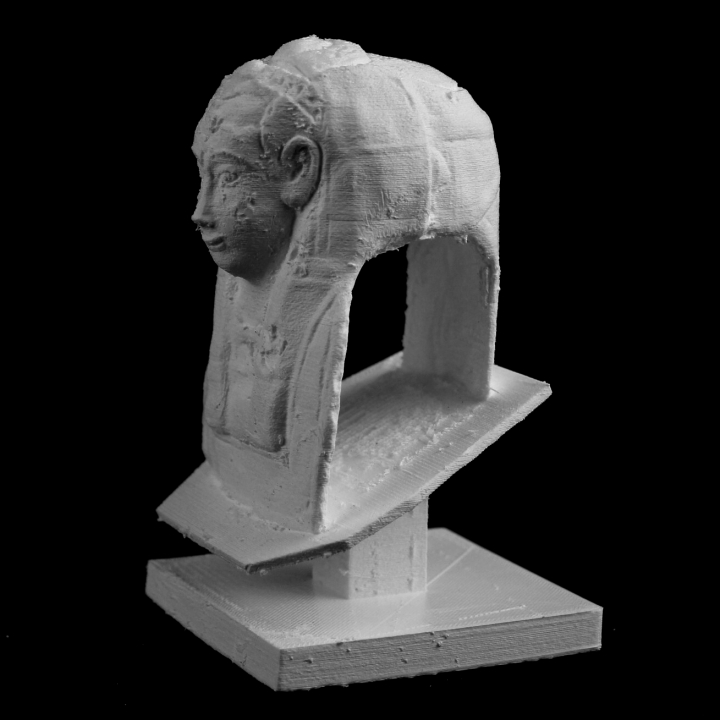
Reklama
3D tiskárny



AONN.cz
Sp┼Ö├ítelen├ę Weby
|
3D modely ARTMummy of Syros in Ipswich Museum, UK

Gilded mummy-masks such as this appear to have been made for persons of high status in the early part of the Roman Period (from about 30 BC). Though Roman artistic traits began to influence native styles in the succeeding fifty years, the masks are still very clearly Egyptian in design. This is clear in the imagery used, including here: the winged sun-disc; a falcon; the human-headed ba (spirit of the deceased); winged serpents representing the goddesses <href="ilink|,_blank|">Wadjet and <href="ilink|,_blank|">Nekhbet, and the mummy on a bier, flanked by winged sphinxes. On the back of the head is <href="ilink|,_blank|">Nut, the sky-goddess, holding two falcons;<href="ilink|,_blank|">Anubis and <href="ilink|,_blank|">Horus presenting the mummy to the seated<href="ilink|,_blank|">Osiris, and below, the spirit of the deceased, depicted again as a ba bird. Above the face is a headband with a central sun disc flanked by <href="ilink|,_blank|">uraeus-serpents. On the top of the head, as though propelling the sun disc, is a blue scarab beetle with outspread wings. There is also a Greek inscription identifying the dead man as Syros, son of a man called Herakles. The face and wig are covered with gold leaf. The use of gilding for the face, common in ancient Egypt, indicates that the deceased was considered as having attained divine status, as gold was regarded as the flesh of the gods. The site of Hawara is famous for its Roman mummy portraits. n├íhodn├Ż v├Żb─Ťr model┼»
|
©Ofrii 2012
| |||